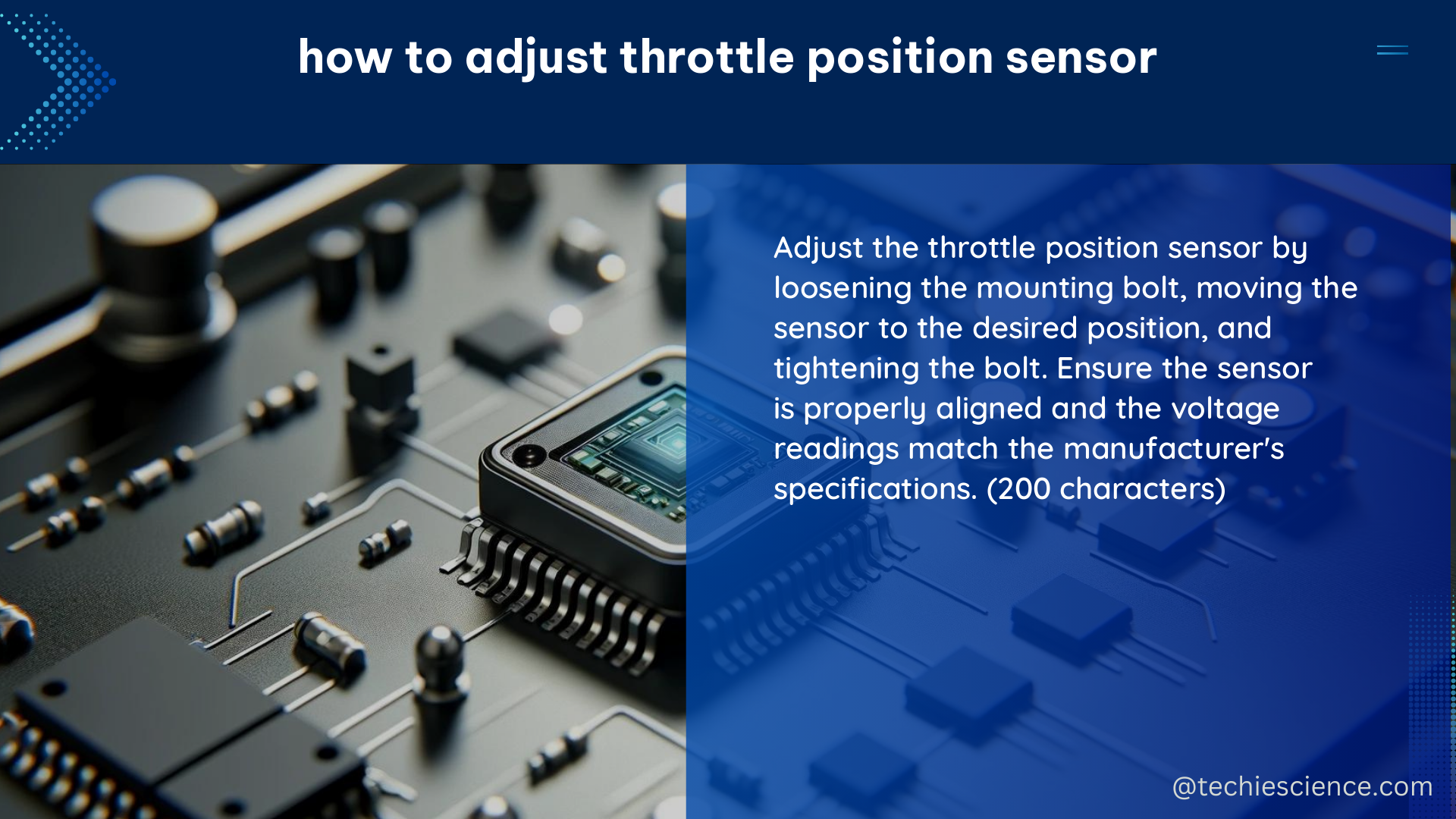Adjusting the Throttle Position Sensor (TPS) is a crucial task for maintaining the proper operation of your vehicle’s engine. The TPS is responsible for providing the Engine Control Unit (ECU) with information about the position of the throttle, which is essential for accurate fuel delivery and engine management. In this comprehensive guide, we will walk you through the step-by-step process of adjusting the TPS, covering both 1G and 2G DSM models, as well as providing valuable tips and best practices to ensure a successful adjustment.
Tools and Materials Required
To adjust the Throttle Position Sensor, you will need the following tools and materials:
- Multimeter or ohm meter
- Screwdriver
- Feeler gauges (set with various thicknesses)
Adjusting the TPS for 1G DSM Models

-
Locate the TPS: The TPS is typically located on the throttle body, near the throttle linkage.
-
Loosen the TPS Screws: Using a screwdriver, gently loosen the screws that hold the TPS in place, but do not remove them completely.
-
Insert the Feeler Gauge: Place a feeler gauge of the appropriate thickness (typically 0.0177″ or 0.45 mm) between the throttle stop screw and the stop lever.
-
Adjust the TPS: Slowly turn the TPS clockwise until the ohm meter deflects to 0 ohms.
-
Tighten the Screws: Evenly tighten the TPS screws, turning each one 1/8 of a turn at a time, until they are secure.
-
Recheck Continuity: Use the multimeter to check the continuity between the TPS terminals while inserting different feeler gauge thicknesses. The resistance should change as the throttle is opened and closed.
Adjusting the TPS for 2G DSM Models
-
Locate the TPS and IPS: In 2G DSM models, the TPS is integrated with the Idle Position Switch (IPS).
-
Insert the Feeler Gauge: Place a 0.0177″ (0.45 mm) feeler gauge between the throttle stop screw and the throttle pulley to open the butterfly.
-
Adjust the TPS: Adjust the TPS until the IPS switches from closed to open.
-
Verify the TPS Voltage: With the feeler gauge still in place, verify that the TPS reads between 0.4 and 1.0 volts.
-
Tighten the Screws: Evenly tighten the TPS screws, turning each one 1/8 of a turn at a time, until they are secure.
Tips and Best Practices
-
Precision is Key: When adjusting the TPS, it is essential to make small, precise adjustments. The sensor can be challenging to set in the correct position, so you may need to make several attempts to get it right.
-
Feeler Gauges: Feeler gauges are invaluable tools for this task, as they allow you to measure and set the exact clearance between the throttle stop screw and the stop lever or throttle pulley.
-
Tighten Evenly: When tightening the screws that hold the TPS to the throttle body, it is crucial to tighten them evenly to avoid changing the sensor’s setting.
-
Recheck Continuity: After adjusting the TPS, always recheck the continuity between the terminals using different feeler gauge thicknesses to ensure the sensor is functioning correctly.
-
Consult the Manual: Refer to your vehicle’s service manual for specific instructions and specifications related to TPS adjustment, as they may vary between different makes and models.
By following the procedures outlined in this guide and using the right tools, you can ensure that your Throttle Position Sensor is properly adjusted, which can have a significant impact on your vehicle’s performance and fuel efficiency.
References
- How to Adjust Throttle Position Sensor
- How to Adjust the Throttle Position Sensor (TPS)
- How to Calibrate a Throttle Position Sensor with a Multi-Tester
- TPS Adjustment Procedure and Testing Procedure
- How to Adjust Throttle Position Sensor

The lambdageeks.com Core SME Team is a group of experienced subject matter experts from diverse scientific and technical fields including Physics, Chemistry, Technology,Electronics & Electrical Engineering, Automotive, Mechanical Engineering. Our team collaborates to create high-quality, well-researched articles on a wide range of science and technology topics for the lambdageeks.com website.
All Our Senior SME are having more than 7 Years of experience in the respective fields . They are either Working Industry Professionals or assocaited With different Universities. Refer Our Authors Page to get to know About our Core SMEs.